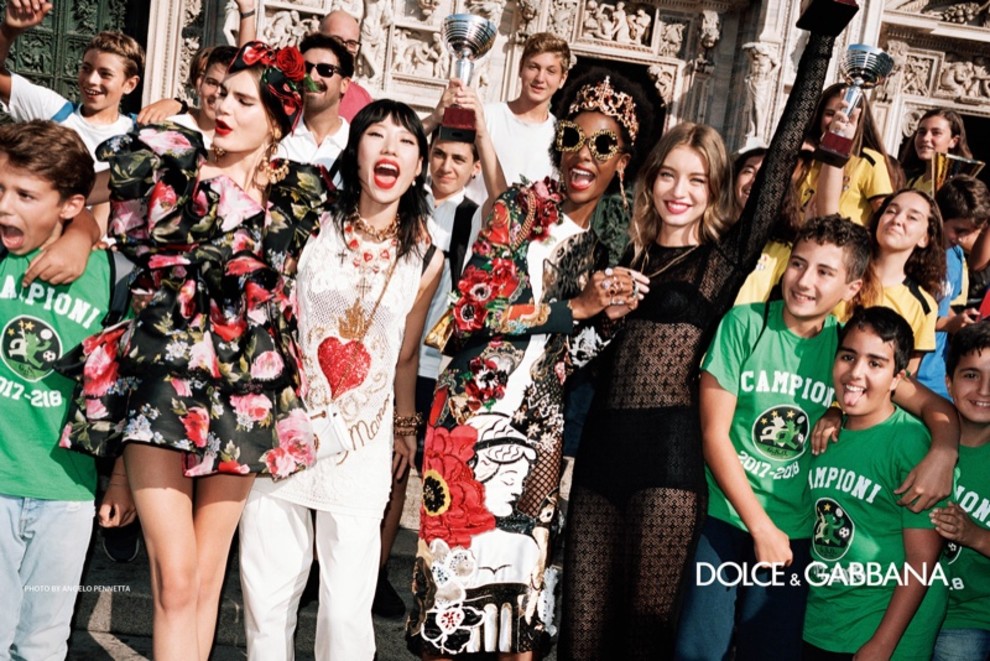Is “cancel culture” much more than a hashtag? If Dolce & Gabbana is any indication, the answer seems to be: not really. Barely six months after China’s Cultural and Tourism Department ordered the Italian design brand to cancel a large-scale fashion show set to take place in Shanghai in what the fashion media predicted would be a truly damaging saga for Dolce & Gabbana, the brand is back in the West, as the New York Times’ Vanessa Friedman wrote this week.
Mere months after the government crackdown, which followed from a questionable ad campaign – featuring a Chinese model eating pizza with chopsticks – and subsequent backlash over racist commentary from one of the brand’s founders, and included social media fury, calling for boycotts of D&G, which extended to retailers, such as Alibaba’s Tmall, which banished the brand from their offerings, D&G wares are beginning to trickle back on to red carpets, namely, at the Tony Awards this past weekend, as well as the recent Metropolitan Museum of Art Costume Institute Gala and the Time 100 Gala (by way of Emilia Clarke, who fronts the brand’s “The One” fragrance campaign).
More than that, just months after Dolce & Gabbana’s communications office was threatening legal action against highly-followed social media users that have labeled its founders and the brand as a whole as racist, their wares are on-stage … thanks to buzzy country sensation Kasey Musgraves, and on social media: Kim Kardashian recently posted a set of images of herself in a D&G get up for her 141 million followers to feast their eyes.
Consumers – at least those in the West (as distinct from the sheer mass of luxury spenders in China) – are interested again, too. Citing fashion discovery platform Lyst data, Friedman noted that “Dolce & Gabbana moved back into the top 20 most-searched brands in the first quarter of 2019, after disappearing in late 2018.” The brand “ranks 15th overall.” As for the state of things for most of the brands that had previously pulled D&G wares, such as Net-a-Porter, they are back to status quo.
In short: while Dolce & Gabbana – the men and the brand – may have found themselves at the wrong end of the often-truly-scathing verbal effects of the industry’s obsession with cancel culture – or as Wikipedia puts it, the phenomenon of “cancelling” or no longer morally, financially, and/or digitally supporting people, usually celebrities, or things that many have deemed unacceptable or problematic – they may be back on the up-and-up. This speaks not only to the nature of consumers, whether it be their short attention spans, their penchant for social media drama (often posing as activism), or their unwillingness to truly alter their behavior by putting their money where they tweets are. It also sheds light on the efficacy of cancel culture.
The problem, according to Friedman, is “that there’s momentum to crying ‘bad!’” – which is precisely how the D&G saga went viral in the first place – “and less incentive to take responsibility for checking in on what happens next.”
This is true for consumers, who are trained to routinely move on to the next striking thing (whether it be news, a handbag, or a pair of shoes) in little time thanks to the increased speed of information dissemination in the digital era. It suggests that there is potentially little depth to these headline-making controversies, save for a handful of exceptions.
This is also true for many media outlets, which are largely driven by the desire for clicks and the need for speed, and some of the more popular social media watchdog accounts, alike. Scandals garner attention and thus, clicks, enabling outlets to derive revenue. “Responsibility,” as Friedman puts it, or maybe better yet, a deep-seated desire for activism and lasting changing, is much harder to come by, and frankly, is rarely in the cards for these outlets.
As a result, it could be argued that cancel culture and call-out culture is – in no small number of cases (and there are exceptions, of course) – little more than a new(ish) way to entertain consumers scrolling through their social media feeds and/or Apple news, while watching the latest episode of Vanderpump Rules or the Real Housewives. This is particularly true – and these issues are more likely to prove compelling/gain traction – in an moment in time that is dominated by a heightened state of social, political and cultural awareness. More than that, a tweet or a comment on Instagram can feel a whole lot like action – even if the action ends there.
In reality, “Issues can blow up and blow over just as quickly,” industry consultant Robert Burke told the Times, before any lasting, tangible, or most importantly, meaningful result is born. Is the general lack of longevity and/or devotion at play here (which results in a marked decline in interest in the aftermath) due to the increased speed upon which the news (and fashion) industry operates or is it because consumers have not really had their hearts in this seemingly unending, inherently clickable flow of questionable actions in the first place?
It is probably a bit of both, which does not bode well for any of the truly cancel-worthy causes – or more realistically, instances worthy of significant reflection, constructive conversation, and concrete plans for broader (i.e., industry-wide) corrective action – in our midst.











